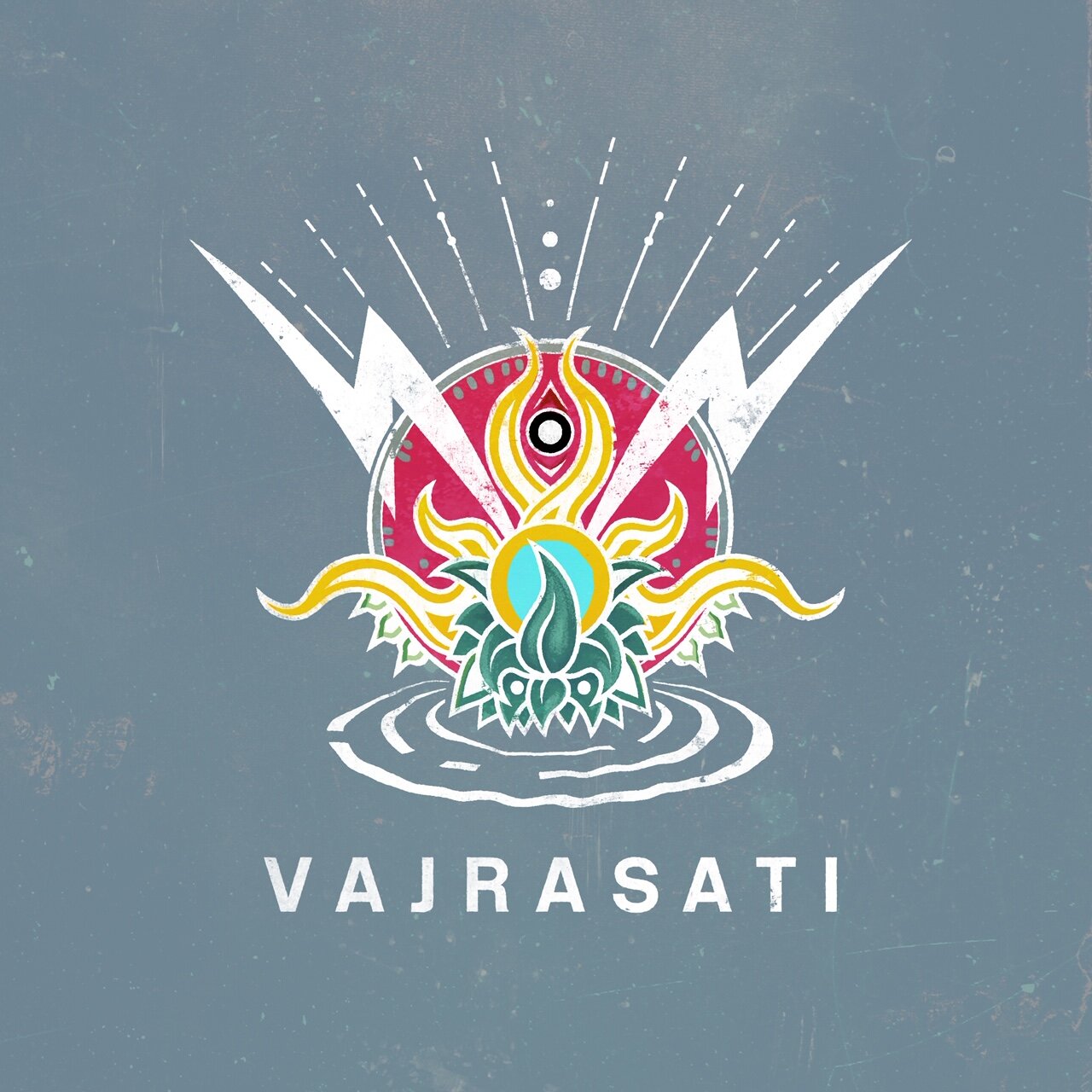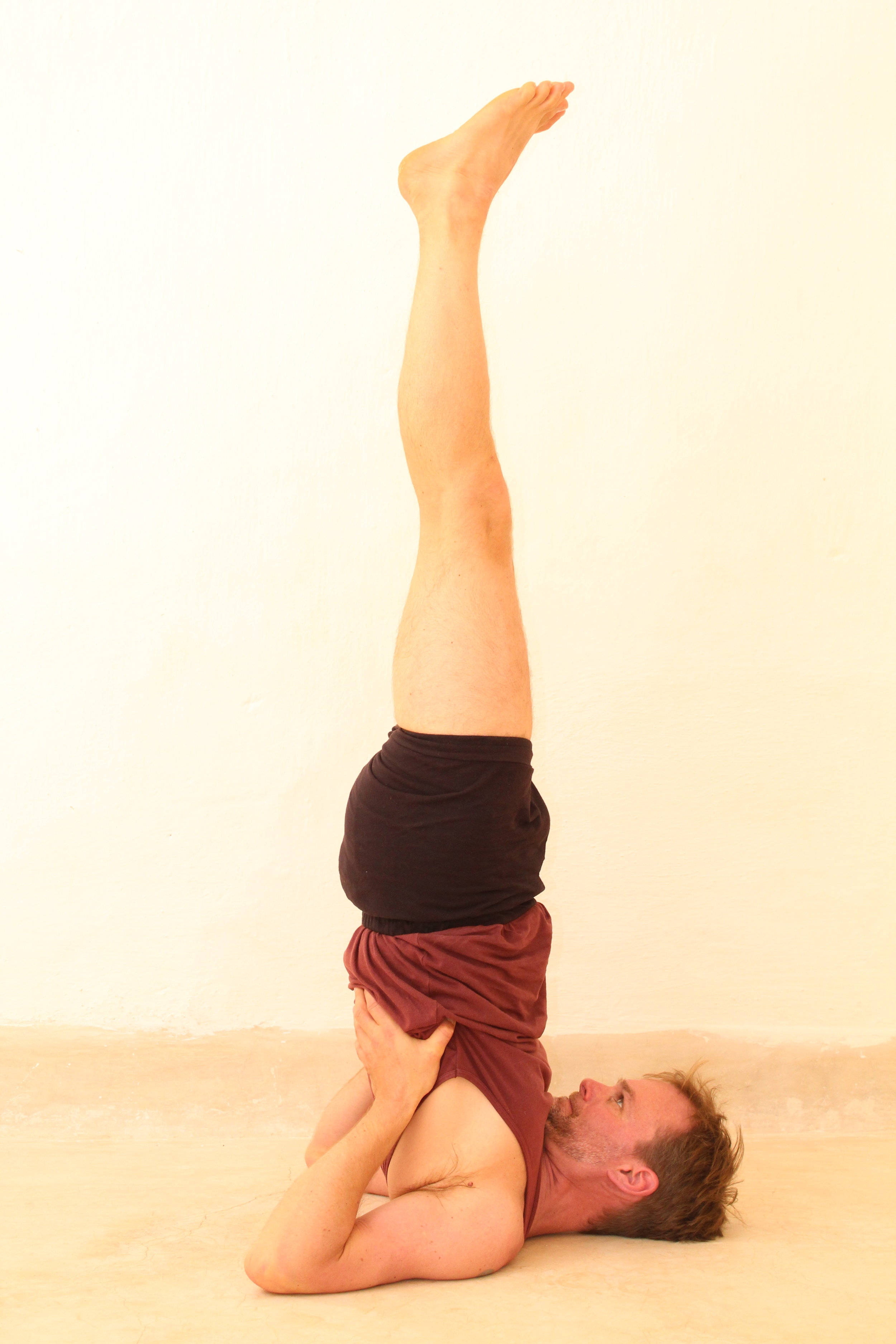Sālamba Sarvāṅgāsana - Supported Shoulderstand
Sālamba = supported; sarvāṅgāsana = all parts of the body.
‘Inversions cultivate the yogic mind’
B.K.S. Iyengar
Fold three blankets neatly and stack them one on top of the other.
(Alternatively, make a lift by placing four blocks together to make a rectangle, one-block depth.Place a blanket over the top with the blanket flush to one of the long ends and hanging over the other. Score a crease in the blanket with your hand so that the end it hangs over is defined. Fold the mat over to cover one block’s width then fold back excess, keeping edges neat. Place another block’s narrow end on the side with the blanket flush/folded mat. This forms a top-heavy T shape).
Lay on back on lift, head coming on to ground. Lift contacts the neck only as far as the first bone on the neck (C7). (On five-block lift, bottom is on the fifth block.)
Ensure you are central on the lift.
Legs bent, extend arms towards feet, palms down.
Turn palms up, inflate chest with inhalation, maintain the shape of chest on exhale.
Keep neck soft, jaw relaxed.
Without turning head left or right, turn palms to the floor.
Swing hips over head, pressing into hands; swing the back up.
Hold the back with hands; fingers pointing in, thumbs around the sides of rib cage.
Keep neck soft, let breath release until mind becomes adjusted and calm.
Maintaining contact with breath, feed side ribs up through hands until most of upper back raised, drawing shoulders underneath to rest on top of shoulders and triceps.
Stay for 20 to 50 breaths, then descend by bending knees, curling spine down to floor supporting with the hands
Contraindications:
Do not practice during menstruation, or on third trimester of pregnancy. (If pregnant, seek advice).
Do not practice with high blood pressure (without seeking advice).
Do not practice if suffering from diarrhoea.
If tightness occurs in the shoulders, neck or upper spine, or pressure occurs in the face or ears, lower the feet to a chair placed behind head.
If one is smothered by the chest raise the height of the lift.
If tension persists descend and seek advice.

